A winch hook is a secure attachment tool used in off-road recovery, lifting, and towing. Designed to connect the winch line to loads or anchor points, it ensures safety and efficiency in high-stress environments.
What is a Winch Hook?
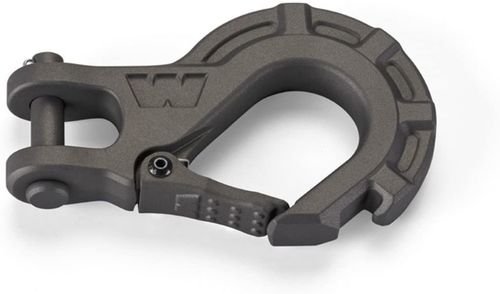
A winch hook is a specialized type of hook designed to be attached to the wire rope or cable of a winch. Its primary function is to provide a secure connection point for the load being lifted or pulled, allowing for safe and controlled movement.
Winch hooks come in various sizes, shapes, and capacities to accommodate different load requirements and applications.
Check: Best winch hooks
Key Components of a Winch Hook
The design of a winch hook may seem straightforward, yet it consists of several essential components, each contributing to its function and safety:
Hook Body
The hook body is the main part of the winch hook, traditionally crafted in a curved or J-shaped form. This shape is vital because it is designed to naturally accommodate loads by providing a robust and secure grip.
The curvature of the hook helps in distributing the weight of the load evenly across its surface, reducing stress on any single point.
This is crucial in preventing the hook from bending or snapping under heavy loads.
Throat Opening
The throat opening refers to the gap between the tip of the hook and its body, through which the winch cable or chain is attached to the hook.
The size of the throat opening is critical; it must be large enough to easily attach to the cable or chain, yet not so large that it allows the attached line to slip out or move excessively, which could lead to wear or failure.
The design of the throat opening often includes a taper or narrowing towards the hook body to ensure a secure hold on the cable or chain.
Point
The point of the hook is the tip, which can either be pointed or flattened depending on the specific application of the hook.
A pointed tip is typically used when the hook must fit into smaller spaces or align with specific parts of a load or attachment points.
In contrast, a flattened tip might be used to increase the surface area in contact with the load or attachment point, distributing the pressure more evenly and reducing wear.
Latch
The latch is a crucial safety feature on a winch hook. It is a spring-loaded or manually operated mechanism that closes over the throat opening once the cable or chain is in place.
Its primary function is to prevent the load from accidentally disengaging from the hook during operations.
The latch must be robust and reliable because its failure could result in the load dropping, potentially causing significant injury or damage.
Shank
The shank is the part of the hook that connects to the winch cable or chain. It needs to be exceptionally strong as it transmits the pulling force from the winch to the hook and then to the load.
The shank may also incorporate features like swivels, which allow it to rotate under load.
This is particularly beneficial in preventing the winch line from twisting during lifting or pulling, which can compromise the strength and integrity of the line.
How Winch Hooks Work
Winch hooks work by securely attaching the load to the lifting device. The process involves the following steps:
Attaching the Load
The first step in utilizing a winch hook effectively is securely attaching the load. This involves using the throat opening of the hook to connect the hook to the load.
The throat opening is designed to easily accommodate the insertion of a winch cable, rope, or chain. During this step, it’s important to ensure that the hook is correctly positioned and the cable or chain is firmly seated within the throat opening.
This is critical because a secure attachment prevents the load from slipping or detaching during lifting or pulling, which could lead to accidents or damage.
Engaging the Latch
Once the hook is attached to the load, the next step is to secure the connection by engaging the latch. The latch is a safety mechanism that locks the winch cable or chain in place within the hook.
This prevents the cable or chain from slipping out of the throat opening during operation. Engaging the latch typically involves flipping a small lever or pressing a spring-loaded component, which then holds the cable or chain securely against the body of the hook.
This step is vital for maintaining the integrity of the lifting or pulling operation and for ensuring the safety of all involved.
Lifting and Pulling Mechanisms
With the load securely attached and the latch engaged, the winch can then be activated to lift or pull the load.
This involves using the winch mechanism to either reel in or let out the cable or chain, depending on whether the task is to lift or pull.
As the winch operates, the hook transmits the mechanical force from the winch to the load. It’s essential during this phase to monitor the load distribution.
Proper load distribution ensures that the weight is balanced and not placing undue stress on any part of the hook or the load.
This is crucial to prevent the hook from bending, deforming, or failing, which could compromise the operation and safety.
Types of Winch Hooks
Clevis Hooks
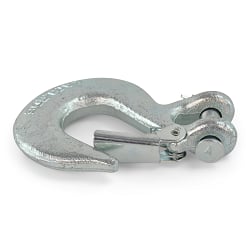
Clevis hooks are known for their robust and secure attachment method.
They are typically designed with a U-shaped bolt and a pin (or clevis) that locks the hook to the load or to rigging hardware such as slings and chains.
This design allows for a direct and stable connection, minimizing the risk of disconnection under load.
Clevis hooks are favored in applications where a quick, yet secure, attachment is necessary, such as automotive towing or industrial lifting tasks.
Eye Hooks
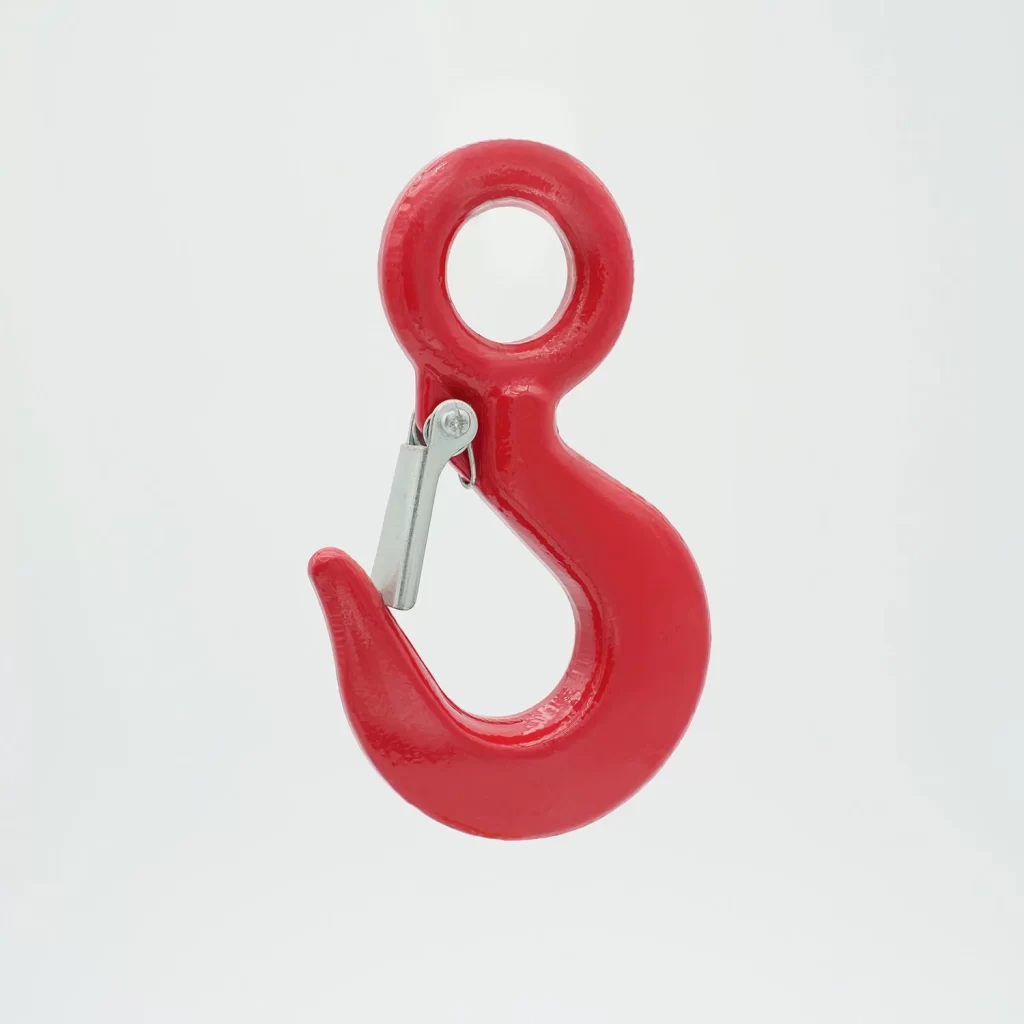
Eye hooks feature a closed loop or ‘eye’ at their end, which offers a versatile connection point. This loop can be used to attach ropes, slings, or chains through manual tying or with other rigging hardware.
Eye hooks are particularly useful in scenarios where multiple rigging attachments might be needed, or where the hook might need to be quickly moved between different setups.
Their versatility makes them a staple in both industrial and maritime operations.
Swivel Hooks
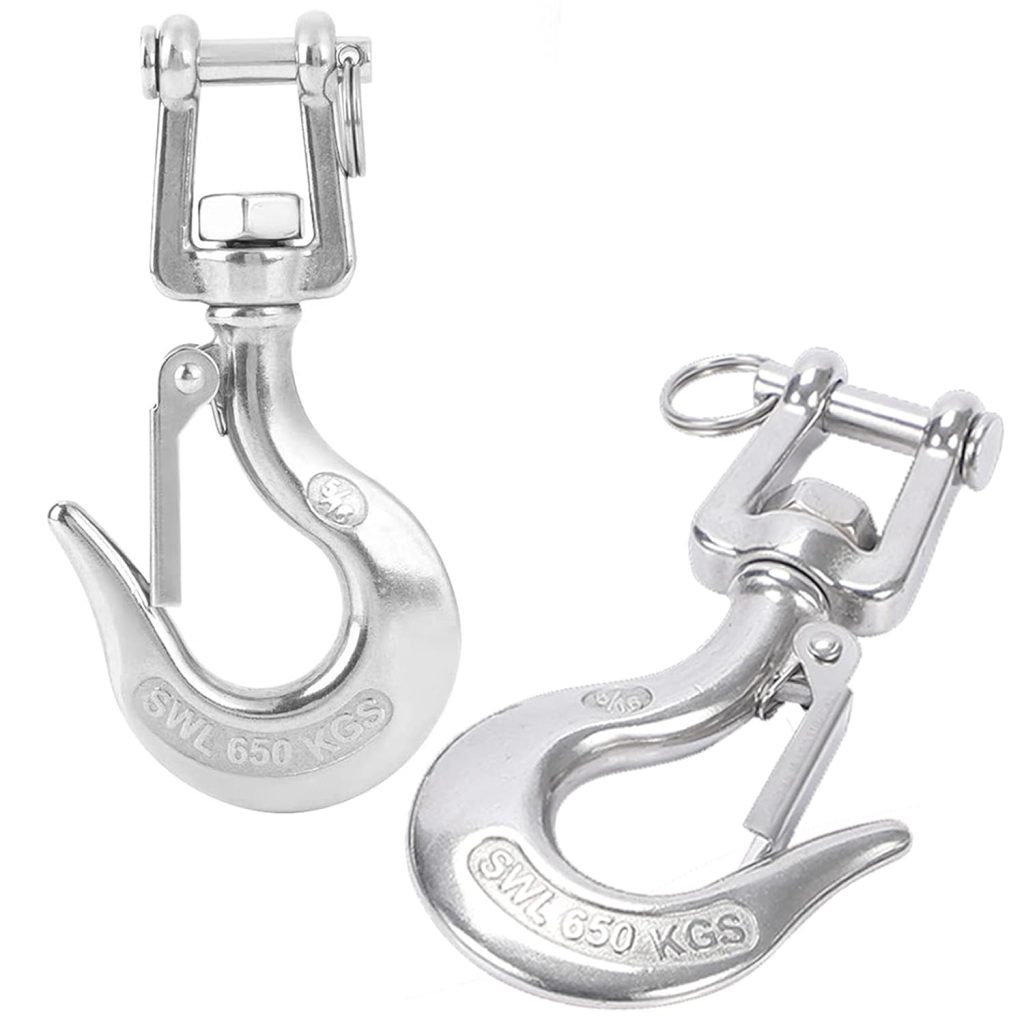
Swivel hooks are equipped with a rotating base that allows the hook to turn or pivot freely. This capability is critical in preventing the winch cable or rope from twisting during operations.
Twisting can not only weaken the structural integrity of the cable but also lead to uneven load distribution, which can be dangerous.
Swivel hooks are ideal for use in crane operations, where the load might rotate during lifting, or in towing applications where the direction of pull may change dynamically.
Sling Hooks
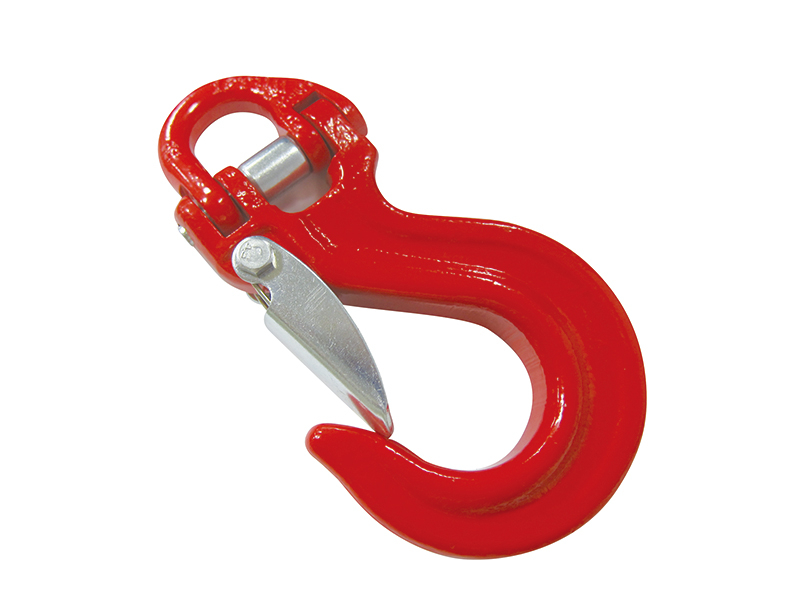
Sling hooks are specifically designed to work with lifting slings. These hooks generally have a wider throat opening to easily accommodate the webbing or rope of a sling.
Sling hooks often come with a safety latch to ensure that the sling does not slip out under load.
Their design is optimized for balanced lifting, making them suitable for handling fragile or unevenly shaped loads that require a gentle touch and secure hold, such as in construction or shipyard operations.
Each type has its unique advantages, making them suitable for different applications based on the nature of the load and the environment.
Safety Considerations
When using winch hooks, several safety aspects must be considered:
Load Capacity and Working Load Limit (WLL)
The Load Capacity and Working Load Limit (WLL) are perhaps the most crucial factors to consider.
The WLL indicates the maximum safe load that the hook can handle under normal conditions.
It’s essential to never exceed this limit as it can lead to catastrophic failures, such as the hook bending, breaking, or failing to hold the load.
Before using a winch hook, always check that its WLL meets or exceeds the weight of the load to be lifted or pulled. This precaution ensures that the hook can handle the load without risk of mechanical failure.
Proper Attachment Techniques
Using the correct techniques to attach the load to the winch hook is vital for safety.
Improper attachment can result in the load slipping off the hook, swinging uncontrollably, or causing the cable to snap, each of which poses serious safety risks.
Key techniques include ensuring the hook’s throat and latch are clear of debris and damage, correctly positioning the cable or chain within the hook, and securely fastening the latch.
Additionally, it’s important to ensure that the attachment point on the load is strong enough to bear the weight and that the angle of attachment does not place undue stress on any part of the hook.
Regular Inspection and Maintenance
Regular inspection and maintenance of winch hooks cannot be overstated. Before and after each use, the hook should be inspected for any signs of wear, deformation, corrosion, or damage.
Look for cracks, nicks, or worn areas, especially around the throat and latch mechanism.
Regular maintenance might also involve cleaning the hook of any dirt, grime, or residues that could compromise its functionality.
Lubricating the moving parts, such as the latch mechanism, can also help maintain its operation and longevity.
Potential Hazards
Being aware of potential hazards in the environment where the winch hook is used is crucial for safety.
This includes everything from ensuring the operational area is free of unnecessary personnel and obstacles to understanding environmental factors like wind, precipitation, and temperature, which can affect the operation.
It’s also vital to consider dynamic loads or forces that might affect the stability and integrity of the load and hook during operations.
Awareness and proactive management of these hazards can prevent accidents and ensure the safety of all personnel involved.
Winch Hook Maintenance and Care
Proper maintenance extends the life of winch hooks and ensures operational safety.
- Cleaning and Lubrication: Regular cleaning and appropriate lubrication preserve the hook’s functionality and prevent rust.
- Storage Best Practices: Store hooks in a dry, clean environment to avoid environmental damage.
- Replacement Guidelines: Replace hooks according to the manufacturer’s recommendations or if any critical wear or damage is detected.
Also check: How to maintain a Winch Hook in detail
Conclusion
Winch hooks are essential for effective and safe lifting and pulling operations. Understanding the types of hooks, their components, and their proper use is crucial for maximizing their performance and longevity.
Emphasizing safety, regular maintenance, and adherence to operational standards ensures that winch hooks can be relied upon in various demanding tasks.

